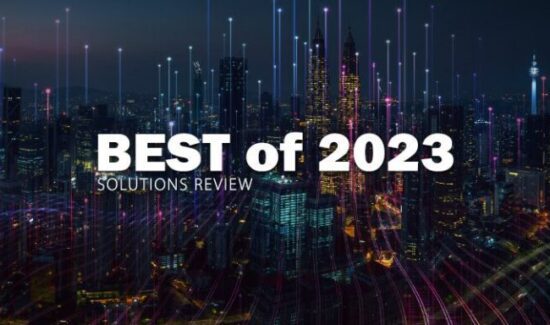Funding Innovation with IT Waste: Common Sources of Overspending

Solutions Review’s Contributed Content Series is a collection of contributed articles written by thought leaders in enterprise tech. In this feature, Tangoe‘s Chief Product Officer Chris Ortbals offers commentary on common sources of enterprise IT overspending, and what to do about it.

Technology is the driving force behind every competitive edge, but as companies mature in their digital transformation, they need to sustain innovation regardless of IT budget cuts and economic belt-tightening. By nature, the act of “creating budget” puts pressure on CTOs, CIOs, and CFOs to ensure that every dollar is wisely spent. Consider that 92 percent of IT leaders are concerned about budgets and headcount in today’s economic climate, according to a Vanson Bourne study.
Luckily, IT assets are generally poorly matched against business needs—particularly in today’s rapid pace of change. So, funding innovation with IT waste is simply a matter of zeroing in on cost savings opportunities and following through in order to capitalize quickly.
In this article, we’ll look at trends in IT overspending and the reasons for them. Plus, we’ll delve into three common areas of budgetary waste and explore how companies can harness AI technologies to fund innovation faster.
Funding Innovation with IT Waste: Common Sources of Overspending
Predominant Cause for IT Overspending: The Cloud
The cloud is ubiquitous thanks in part to increasing demands for software, hosted network services, and outsourced data storage. But it has the potential to become a technology landfill. To appreciate the dollar value of cloud waste, it helps to take in these facts as a collective:
- Cloud overspending by 70 percent is commonplace, according to Gartner.
- 66 percent of CIOs are already spending more on cloud services than they budgeted according to IDC.
- Nearly 30 percent of cloud resources are wasted, according to a CIO.com study.
- 30-40% of IT budgets are consumed by unsanctioned applications
- 82% of CIOs say they’ll reduce spending by optimizing SaaS licenses
The cloud’s allure lies in its scalability, flexibility, and potential for cost savings. Yet, Gartner’s prediction that more than 50 percent of enterprise IT spending will shift to the cloud by 2025 is met with a harsh reality: cloud overprovisioning is commonplace, with waste figures reaching 50 percent and 70 percent.
Cloud services offer easy entry but can become a financial quagmire as companies find themselves highly dependent on resources with charges that escalate sharply even as usage grows moderately. How does this happen? Variable costs, software purchases made without the involvement of IT, and the lack of per-unit pricing make it challenging to build predictability into the IT financial plan. And it’s not just cloud infrastructure or Shadow IT as a collective whole. Sometimes it’s that one, large-volume application – the business staple – that eats the biggest hole in the budget. This highlights the need for efficient cloud cost management approaches, like FinOps.
While the cloud is typically the number-one threat to your budget, other technologies can crack equally significant leaks.
Ripe for Waste: Communications that Lose Touch with the Business
After rapid digital transformation and shifting business models, communications-related technologies can lose touch with the demands of the workforce. As companies adapt to hybrid work models and shifting corporate locations, internet, telecom, and mobile phone calling plans often fall out of sync with actual needs.
The end of COVID consumption habits and fluctuating travel policies lead to overspending in these areas. From bulky contracts and redundant collaboration software applications in use simultaneously to hidden calling plan fees, and charges for discontinued telecom services, companies have far more than they truly need, resulting in hundreds, or even thousands of dollars per month in unnecessary spending.
Cracking a Leak in Your Budget: Technologies in Motion
Technology assets with a high level of activity are also the cause of rising costs. The need to assign and reassign software licenses and mobile devices to employees is the marque example, but leaders should be aware of other technologies that are on the move. The rapid convergence of technologies, such as the integration of network and security solutions into conglomerate platforms, can lead to redundant tools.
Upgrades and modernization initiatives where technologies are migrating are also areas of concern. The advent of software-defined networks (SD-WAN) typically introduces a new barrage of regional internet service providers, where companies now need to ensure they are getting the best service at the lowest cost. Legacy copper line telephone technologies being phased out and upgraded to digital communications are other areas where rising prices can be traded for cost savings.
Without the right tools, plugging these leaks can be difficult. Every tech service, device, and vendor must be carefully audited and tracked. Moreover, costs must be frequently evaluated, benchmarked, and compared against the going market price. This is where AI-powered technology platforms can help.
Harnessing AI for Automated Cost Reductions
Tangoe, a technology expense management company, has been tracking $15B in IT spending across diverse industries and says, on average, companies overspend on IT services overall by 20 percent, with roughly 15-40 percent of that coming from the cloud, 15-30 percent from mobile devices, and 10-15 percent from telecom services. This total cost reduction opportunity underscores the importance of not only addressing cloud costs but also extending optimization across the entire IT environment.
AI manages costs more effectively than spreadsheets and manual processes. Through machine learning, behavioral analytics, predictive analytics, and robotic process automation, IT financial leaders can identify waste in real time but also leverage automation to make real-time adjustments to services. That means recognizing savings much faster. While the industry hasn’t achieved “autonomous cost management” yet, there are significant advances being made to accelerate the speed-to-insight and speed-to-savings.
Reducing Waste Permits Sustainable Growth
In the pursuit of reliable digital innovation, wastefulness remains a dominant dilemma. Cloud overprovisioning, misaligned mobile and telecom services, and migrating technologies are common areas where wasteful spending occurs. But companies can protect their IT budgets by increasing cost controls and leveraging the benefits to fund new investments. As IT and finance leaders continue to seek ways to trim costs and ensure their tech stacks are fully utilized, these tips will play a pivotal role in driving efficiency for sustainable growth.

















